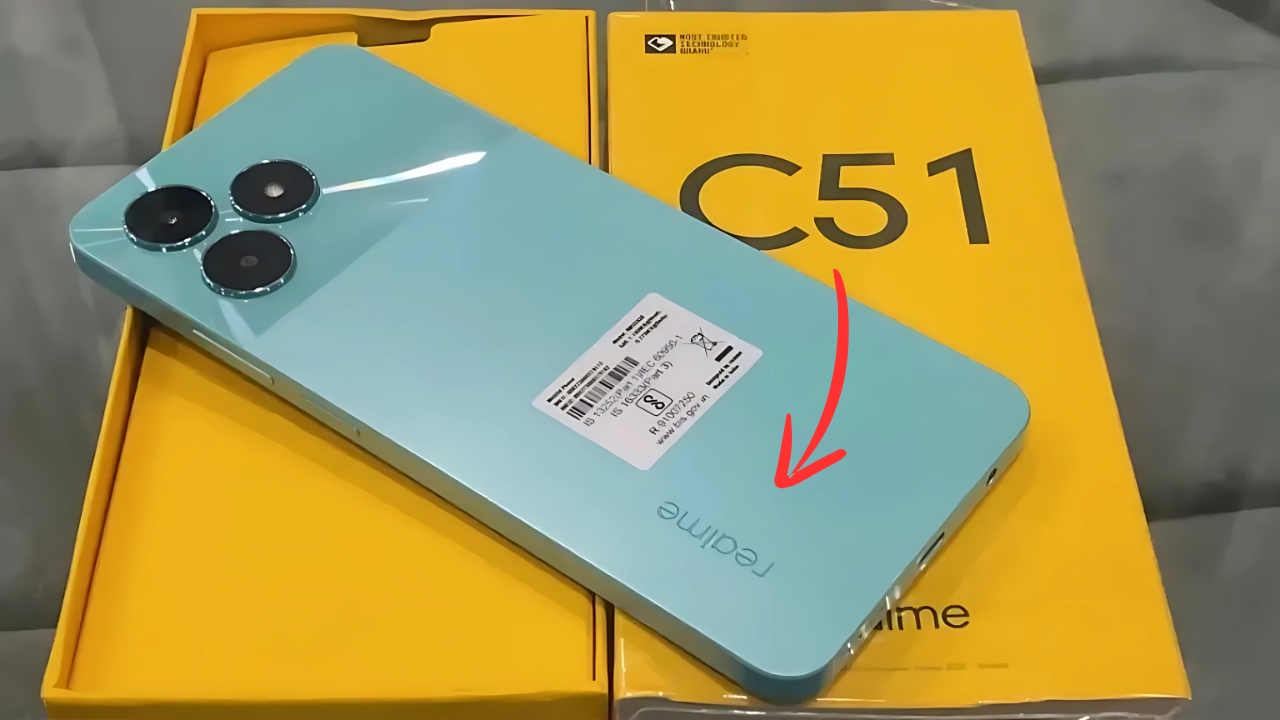Realme C51: The Realme C51 represents a significant milestone in the evolution of budget smartphones, demonstrating how the boundaries between entry-level and mid-range devices continue to blur in today’s competitive market.
As part of Realme’s popular C-series lineup, this device embodies the brand’s philosophy of delivering substantial value while maintaining affordability.
Through thoughtful hardware choices and software optimizations, the C51 addresses the essential needs of cost-conscious consumers without feeling like a substantial compromise.
Realme C51: Design and Build Quality
The Realme C51 showcases a design aesthetic that belies its budget classification. The device features a polycarbonate unibody construction with a gradient finish that creates visual depth and resists fingerprints effectively.
The rear panel incorporates subtle texture patterns that enhance grip while reflecting light in distinctive ways, giving the phone a premium appearance despite its economic positioning.
With dimensions of approximately 164.5 x 75.8 x 8.1mm and weighing around 188 grams, the C51 strikes a comfortable balance between screen size and one-handed usability.
The relatively slim profile feels substantial without becoming unwieldy, particularly important in a market segment where build quality often receives less attention.
The device includes a side-mounted fingerprint sensor integrated into the power button, providing reliable biometric authentication without requiring more expensive under-display technology.
This placement proves intuitive and responsive, enhancing the overall user experience through thoughtful implementation of available technologies.
Display Technology
The Realme C51 comes equipped with a 6.7-inch IPS LCD display featuring a resolution of 1600 x 720 pixels. While not matching the contrast ratios of AMOLED panels found in higher-priced models, the display delivers respectable color reproduction and viewing angles for its class.
The 90Hz refresh rate represents a particularly noteworthy inclusion at this price point, delivering smoother scrolling and animations than the 60Hz displays that have traditionally dominated the budget segment.
Protective glass (likely Gorilla Glass 3 or equivalent) provides reasonable resistance against scratches and minor impacts, though without the more advanced protection found in premium offerings.
The waterdrop notch housing the front camera minimizes display interruption while maintaining manufacturing cost efficiency.
Peak brightness reaches approximately 450 nits, sufficient for indoor use and casual outdoor viewing, though direct sunlight legibility remains challenging – a common limitation in this category.
The display’s color accuracy, while not calibrated to professional standards, proves entirely adequate for social media browsing, video consumption, and casual gaming.
Performance Capabilities
Under the hood, the Realme C51 employs a Unisoc T612 chipset, an octa-core processor fabricated on a 12nm process. This configuration pairs two Cortex-A75 performance cores (clocked at 1.8GHz) with six Cortex-A55 efficiency cores (clocked at 1.8GHz), delivering balanced performance for everyday tasks while maintaining power efficiency.
Memory configurations typically include 4GB RAM paired with either 64GB or 128GB of internal storage, expandable via microSD.
The inclusion of LPDDR4X RAM provides reasonable multitasking capabilities, though users handling numerous applications simultaneously may experience occasional reloading.
The UFS 2.1 storage standard delivers faster data access than the eMMC storage often found at this price point, resulting in quicker app launches and file transfers.
Benchmark performance places the device firmly in the entry-level category, with AnTuTu scores around 230,000 points. While not challenging devices in higher price brackets, this performance level handles messaging, social media browsing, video streaming, and light gaming without significant frustration – precisely the use cases most relevant to the target demographic.
Camera System
The imaging system represents one area where budget constraints become most apparent, though Realme has made commendable efforts to maximize capabilities within these limitations. T
he primary rear camera employs a 50MP sensor with an f/1.8 aperture, capable of capturing detailed images in good lighting conditions.
This main sensor utilizes pixel-binning technology to combine four pixels into one, effectively producing 12.5MP images with improved light sensitivity.
Supporting the main camera is a 2MP depth sensor that assists with portrait mode effects. While limited in standalone utility, this secondary camera helps the software algorithms distinguish between subjects and backgrounds, producing reasonably convincing bokeh effects in portrait photography.
The 8MP front-facing camera delivers acceptable selfies for social media sharing, though dynamic range and low-light performance remain predictably modest. Software-based beautification features provide customizable enhancements without excessive artificial processing.
Video recording capabilities include 1080p capture at 30fps, with electronic stabilization helping to reduce minor handshake.
While lacking the 4K options and sophisticated stabilization of higher-end devices, the video quality proves serviceable for casual documentation and social sharing.
Battery Life and Charging
Battery performance stands as one of the C51’s strongest attributes, featuring a substantial 5,000mAh capacity that easily delivers full-day usage even under moderate to heavy use scenarios.
For typical budget-segment users with less intensive application usage, the device can frequently achieve two days between charges.
Charging capabilities include 18W fast charging support via USB-C, allowing the device to reach approximately 50% capacity in 45 minutes.
While not matching the rapid charging technologies of flagship devices, this represents reasonable performance for the category and a meaningful improvement over the 10W charging common in previous generations of budget smartphones.
Software Experience
The Realme C51 ships with Realme UI, based on Android 13, providing a relatively clean and intuitive user experience with thoughtful customization options.
The interface balances visual appeal with performance optimization, avoiding excessive animations that might tax the modest hardware.
Bloatware remains present but relatively restrained compared to some competitors, with most pre-installed applications being removable.
The system includes practical features like split-screen multitasking, app cloning for managing multiple social media accounts, and a comprehensive game mode that optimizes performance during gameplay.
Security updates typically follow a quarterly schedule, with major Android version updates less certain – a common consideration in the budget segment where long-term software support rarely matches premium offerings.
Realme C51:
The Realme C51 exemplifies the remarkable evolution of budget smartphones, delivering a balanced experience that satisfies essential requirements while incorporating select features previously reserved for more expensive devices.
By prioritizing practical elements like battery life, display fluidity, and build quality, Realme has created a compelling option for cost-conscious consumers seeking maximum value without excessive compromise.
While limitations exist – particularly in camera versatility and processing power for demanding applications – these trade-offs reflect thoughtful decisions rather than careless cost-cutting.
For many users, especially those prioritizing communication, social media, and content consumption, the C51 represents an increasingly compelling argument against spending substantially more on higher-tier devices offering diminishing returns on investment.









